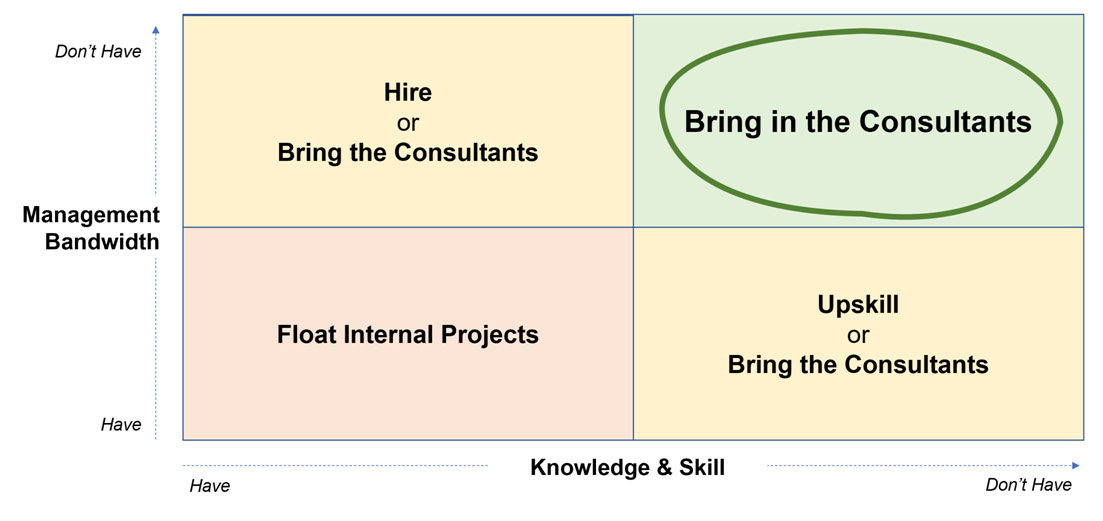Okay, so we are in the midst of a pandemic with no end in sight. As companies try hard to get business back on track, they are cutting down on discretionary spends. Consulting services fall in that bracket – especially of the strategy and management consulting kind. As per Consultancy.org estimates, the Global consulting industry is expected to shrink by 19% in 2020. This estimate was in March 2020. As things stand in October 2020, it looks like a conservative estimate. This is quite counter-intuitive considering that the situation is quite unprecedented across industries, and the management challenges faced should in-fact increase the need for consultants.
Agreed that firms are grappling with so many current issues and cost pressures, that cutting consulting spends seems to be an easy call. It’s also a “serves them right” moment for people who like to criticize consultants or joke about how they package client data and charge them for it. But if the global USD 160 Bn industry has survived all the criticisms and jokes, and continued to grow, it must be delivering value. Over many decades, consultants have played a role in helping businesses improve shareholder value through a range of services. The outcome of consulting engagements are typically seen in 3-5 years as the full benefits of the recommendations and the consequent interventions are realized. So, what will be the impact of the cut on consulting spends on the firms in the medium- to long-term? Is it right to completely eliminate consulting spends? Are there spends that firms should still be prioritizing to continue delivering superior shareholder value?
Introducing the Concept of Consulting JTBD
In order to decide which areas companies can eliminate consulting spends without impacting medium- to long-term business performance, we can use the concept of jobs-to-be-done (JTBD). The concept of JTBD was introduced by Clayton Christensen et. al. in 2016 in the context of consumer products. The concept simply proposes that consumers have jobs to be done in their lives, and they employ products and brands to get these jobs done. For those not initiated to the concept here are a couple of examples. A consumer who wishes to communicate with others employs a phone to get the job done. A customer who wishes to get to the airport employs a cab aggregator. You get the drift about the concept, and that’s sufficient for this article.
Consultants are also employed by firms to get jobs done. The “jobs” in the Consulting context could vary from identifying growth opportunities, to developing the go-to-market strategy for a new product, to improving profitability, to improving supply chain, to reducing business risk, to improving return on capital employed, etc. The business problems may be different, but the common theme of all these jobs is that they eventually improve shareholder value.
The Consulting JTBD Framework
The JTBDs in the context of a firm can be seen in 2 dimensions.
The first dimension is whether the firm has the “knowledge and skills” to do the job. Given that in a general sense the profile of management consultants is not very different from the business leaders (typically Engineers / MBAs), the lack of knowledge and skills is unlikely to come from education but from experience and specialisation. In such cases, consultants with the required knowledge and experience in the specific area can add a lot of value.
The second dimension is whether the firm has the “management bandwidth” to execute the job. Firms are usually staffed for managing the business-as-usual, and often the team may not have the bandwidth to take up strategic projects. In such a situation too, the short-term intervention and support from consultants will help.
The Consulting JTBD Framework in Chart 1 based on the above factors will help prioritize projects where firms should essentially consider engaging consultants even in difficult times to continue delivering long-term value.
Chart 1: The Consulting JTBD Framework

As seen from the Chart, the easiest areas where consultants can be dropped are those where the firm has the knowledge and skills as well as the management bandwidth. It is best to conceptualize strategic projects, and assign them to internal teams with clear timelines and budgets as required for execution. A review and monitoring process should be put in place to make sure that the projects deliver on the “job” within budget and on time.
At the other end, the jobs where consultants would be most helpful for clients are where the firm lacks the Knowledge & Skill as well as the Management Bandwidth to execute the job. One could argue that it may be possible to close both gaps by hiring people with the right skills. However, typically the nature of consulting products is such that they are short- to medium-term interventions which do not require the same skills on an ongoing basis. Hence, hiring consultants not only brings in superior practice knowledge but also reduces the long-term costs compared to hiring skilled personnel.
Hiring could also be the solution when firms have the knowledge and skills internally, but do not have sufficient management bandwidth for the job. Usually, such a solution will work best when the knowledge and skills are present in the leadership level who can guide a team to execute the project but their team does not have the bandwidth to take up the job. In such cases hiring people at lower levels to support the managers or to free up their time can help avoid consultants. However, if the new hires do not have any jobs to do in the longer-term it is better to hire consultants to complete the project. The consultants can be well utilized by their working alongside a knowledgeable internal expert.
Where management has the bandwidth but does not have the knowledge or skills, upskilling key people could be an option. There are advantages of this approach as the knowledge and skill thus developed can help the companies in the longer term to take up multiple strategic projects. However, the factor to consider is the time available. Usually upskilling takes time, and even the people who are trained in new areas need time to be able to deliver results on strategic projects. Hence, if the companies are hard-pressed on time for delivering results, it is advisable to engage consultants.
Conclusion
Amidst the pandemic, there is a tendency for firms to considerably reduce, if not completely eliminate consulting spends. However, it is important in the mid-long term interest of the firm’s shareholders that the “jobs” executed by the consultants are done. As seen from the Consulting JTBD Framework, it is possible for companies to eliminate consulting spends in many areas based on strength of internal knowledge & skills and/or by leveraging available management bandwidth. In areas where they lack one or both of these, firms should continue investing in consulting projects to ensure shareholder value creation in the mid-long term.
Santosh Sreedhar is a Partner with Avalon Consulting, a leading Asia-focused Strategy & Management Consulting firm. He can be reached on santosh.sreedhar@consultavalon.com.

Santosh Sreedhar
A strategy consultant since 2006, Santosh advises clients in a wide range of sectors including consumer, agribusiness, automotive, chemicals, and private equity. Prior to Consulting, Santosh has spent about six years in brand management and sales with leading Indian FMCG companies - Amul and CavinKare.







